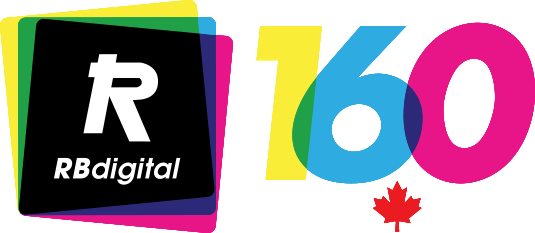Written By: Debbie Mckeegan - FESPA Textile Ambassador
The Rapid Evolution Of Print Technology Continues To Disrupt The Apparel Industry, Sparking Breakthroughs Such As Direct-To-Film (DTF). Known For Its Versatility And Efficiency, DTF Printing Has And Continues To Gain Ground In Garment Decoration For Sportswear And Product Personalisation.
DTF also presents a cost-effective manufacturing option for the decorative textile industry – by significantly reducing ink wastage and streamlining maintenance processes. DTF printing now presents a viable, creative solution for customising sportswear and apparel textile products, whilst delivering competitive advantages to businesses within the sector. Let's explore the advantages and benefits of a technology and discover why it is creating major noise in the apparel sector:
REVOLUTIONARY PRODUCTIVITY
The need for speed accompanies DTF printing, with a whole host of machines promising impressive performance, vibrant colour, print quality and an efficient, agile output for on-demand manufacturers.
From Mimaki the new TXF 300, for instance, has tripled productivity compared to its predecessor, the TXF 150, which remains a popular choice amongst PSP's printing at 2.6 sqm per hour. Left unattended the printer offers an efficient solution for businesses offering garment decoration.
While speed is essential, so is the reliability, print quality and longevity/lifespan of the final product. The TXF 300 printer delivers high-quality imagery, demonstrating that speed and quality can co-exist for garment decoration. It also leverages the reliability of the Mimaki ink supply system which ensures consistent colour accuracy, an important factor when printing using white inks where sediment can cause colour variance and print head blockages.
VERSATILE DECORATIVE APPLICATIONS
Flexibility is another charm of DTF printing. While certain fabrics can present challenges, DTF can handle a wide range of substrates - synthetic and organic - including T-shirts, sweaters, hoodies, hats, promotional bags and other accessories. This versatility opens up endless product possibilities and new commercial opportunities in the sportswear and product personalisation sectors.
Andrew Gregory of Hybrid, a Mimaki partner who we recently interviewed, gave us his take on the value DTF delivers to the marketplace “The potential it offers to businesses is exciting. From emerging DTF investors to experienced users seeking a more reliable brand, all are showing interest in this cutting-edge technology. As new market segments are explored, the accessibility and reliability of DTF technology will only continue to drive its growth”.
“However, the true power of DTF comes from how it seamlessly meets market needs. The rise of e-commerce and a yearning for customisation and personalisation that is fuelling the growth and importance of DTF. With this technology, businesses can diversify their offerings, catering to everything from small logos to full-front t-shirt designs. It offers unmatched flexibility and convenience”.
The traction gained within the industry to date is a testimony to the versatility of DTF technologies. Their widespread use proves the process to be a cost-effective choice for the decorative apparel industries in reducing both ink consumption and maintenance requirements whilst adding operational efficiency, production agility and speed for on-demand manufacture.
DTF printing has brought about a paradigm shift in the apparel industry, enabling businesses to not just thrive but to enter new markets by delivering creative applications and personalised products to their customers.
HYBRID TECHNOLOGY – DTF/DTG
Spawned from direct to garment technology and the evolution of transfer printing DTF began as a stand-alone process. As the market has evolved Epson have continued to develop an innovative hybrid solution that sits neatly in both worlds.
The machine uses the same inks – simplifying the process and adding that vital product/process agility the industry now demands. Phil McMullin, Head of Sales Commercial & Industrial at Epson UK Ltd, explained "Following the successful launch of the hybrid SC – F2200 last year, we've recently introduced an entry-level product, the SureColor F1000, a DTG/DTF hybrid which we are launching soon. For speed we also have the super productivity of the SC - F3000.”
Phil Continued: "Print is not dead; it's alive and evolving in various directions. The personalization wave that started during COVID is still going strong, and it offers a massive profit opportunity for our customers. Adding value is key. Everybody's being hit by rising costs, and margins are getting squeezed. The way to get your margins back is to offer something unique - the personalisation aspect. This is where profitability comes back."
Looking Forward, The Future Of Direct-To-Film (DTF) Technology Appears To Be One Of Relentless Innovation And Expansion With The Market Increasingly Demanding Sustainable Solutions.
The next generation of DTF is poised to offer eco-friendly inks and recyclable film materials, significantly reducing the environmental footprint of the printing process.
Additionally, advancements in AI and machine learning will likely enhance the precision and efficiency of DTF printers, enabling even faster turnaround times and higher fidelity in complex print jobs. The integration of smart technology will also facilitate predictive maintenance, reducing downtime and further optimizing operational efficiency.
As digital integration deepens, is it too futuristic to expect a seamless connection between DTF systems and online platforms, streamlining the customisation process for end-users? DTF is set to not only sustain its position as a viable keystone in textile customisation but also evolve into an even more versatile, sustainable, and user-friendly technology, shaping the future landscape of the garment decoration industry.
CONCLUSION: KEY TAKEAWAYS FOR DIRECT TO FILM PRINTING
- Increased Productivity: DTF printing significantly enhances productivity and creativity and delivers a viable option for on-demand garment decoration.
- Quality & Consistency: Choose your technology partners wisely. High-quality prints are achievable through advanced technology like variable dot size printing and waveform control – We look forward to witnessing the evolution of print technology as the market evolves.
- Not all Consumables are Equal: Care should be taken when choosing inks, media and machinery to guarantee final output meets industry specifications. Saving cash on poor raw materials can lead to inferior print and product longevity.
- Cost-Effectiveness: The efficiency of DTF printing reduces ink consumption and maintenance needs, making it a cost-effective solution for sportswear and product personalisation.

